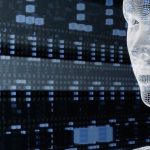The first International AI Safety Report came out to guide future talks on managing the risks tied to artificial intelligence. It points out that we still don’t have clear answers on many of the threats we face or the best ways to tackle them.
This report followed the first AI Safety Summit at Bletchley Park hosted by the UK in November 2023 and was led by AI expert Yoshua Bengio. It dives into a range of issues, from AI’s effect on jobs and the environment to its role in cyber attacks and deepfakes, and how it can perpetuate social biases. It also looks at the risk of market concentration in AI and the widening gap between countries in AI research and development, focusing on general-purpose AI systems that can handle various tasks.
The report doesn’t make definitive claims. It underscores our uncertainty about how rapidly evolving technology will shape up and calls for ongoing monitoring. It outlines two main challenges in managing AI risks. First, it’s tough to prioritize these risks when we aren’t sure how severe they are or how likely they are to occur. Second, understanding roles and responsibilities across the AI value chain is complicated, making it hard to encourage responsible action.
Yet, the report emphasizes that how AI unfolds in the future hinges on political decisions today. The way we develop general-purpose AI, the issues we tackle, and who benefits from these technologies will be shaped by the choices we make now. It stresses the need for global cooperation on these fronts, suggesting that open dialogue among scientists and the public is vital for informed policymaking.
The insights from this report will fuel discussions at the upcoming AI Action Summit in France in early February 2025, building on previous summits in Korea and the UK.
When it comes to societal risks, the report warns the impact of AI on labor markets could be huge. While the exact effects remain uncertain, productivity gains might result in wage increases for some sectors while hurting others. The near-term focus will likely center on jobs mainly involving cognitive tasks. Furthermore, as AI advances, it could threaten worker autonomy and well-being, especially for those in logistics facing constant monitoring and AI-driven workloads.
Echoing findings from the IMF, the report warns AI could worsen income inequality without political intervention. It states that AI-driven automation might decrease the share of income going to workers compared to capital owners. The so-called “AI R&D divide” could worsen inequalities, with a concentration of AI development in wealthy countries having strong digital infrastructures, like the US, which in 2023 produced 56% of major general-purpose AI models.
The document also sheds light on “ghost work,” where hidden labor in low-income countries supports AI model development. This work may offer economic chances but often lacks stability, benefits, and protections.
Market concentration is another major theme, where a few companies hold sway over AI’s evolution. On the environmental side, although data centers are switching to renewables, a lot of AI training still relies on fossil fuels and consumes large amounts of water. Improvements in hardware efficiency haven’t kept energy consumption in check and may even accelerate it due to rebound effects, with current estimates becoming increasingly uncertain as the technology evolves.
Discussing malfunction risks, the report points out how AI can amplify existing social and political biases, leading to discriminatory practices. Most AI systems draw from datasets that largely reflect Western cultures, making bias mitigation tricky. It calls for diverse perspectives in this area to prevent reinforcing stereotypes.
Concerns remain over a potential loss of control as AI systems become more advanced. Opinions vary widely, from skepticism about the likelihood of catastrophic failures to serious concern over the risks driven by competition among firms and nations.
The report also examines malicious AI use. It covers threats like cyber attacks, deepfakes, and the potential for AI to assist in creating biological or chemical weapons. Regarding deepfakes, children and women are particularly vulnerable to the resulting harm. Current detection methods are improving, but challenges remain in reliably identifying and mitigating harmful AI-generated content.
On the topic of cybersecurity, AI can autonomously find and exploit vulnerabilities, but it also offers tools for defense. Rapid advancements make it hard to predict large-scale risks, highlighting the need for ongoing evaluation and better metrics. Lastly, while AI can outline steps to create harmful pathogens, the complexity of such tasks means practical risks for untrained individuals may still be limited.









